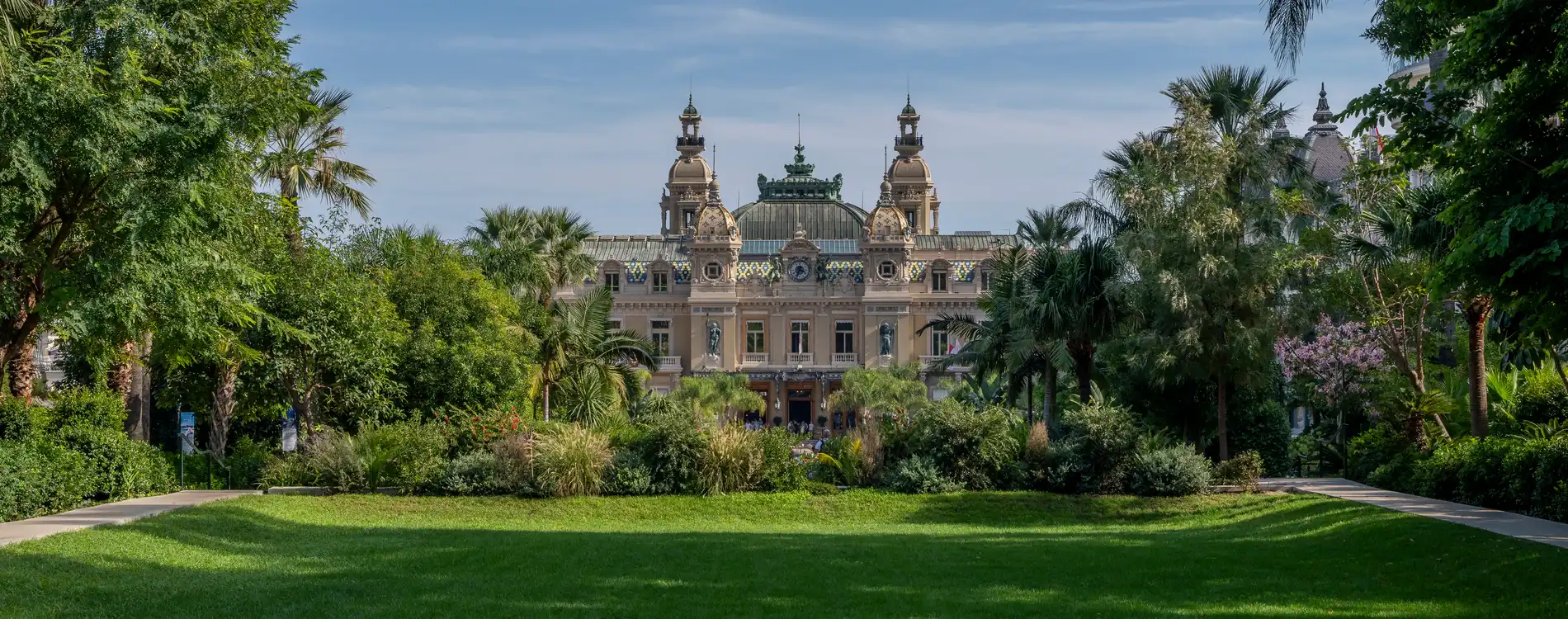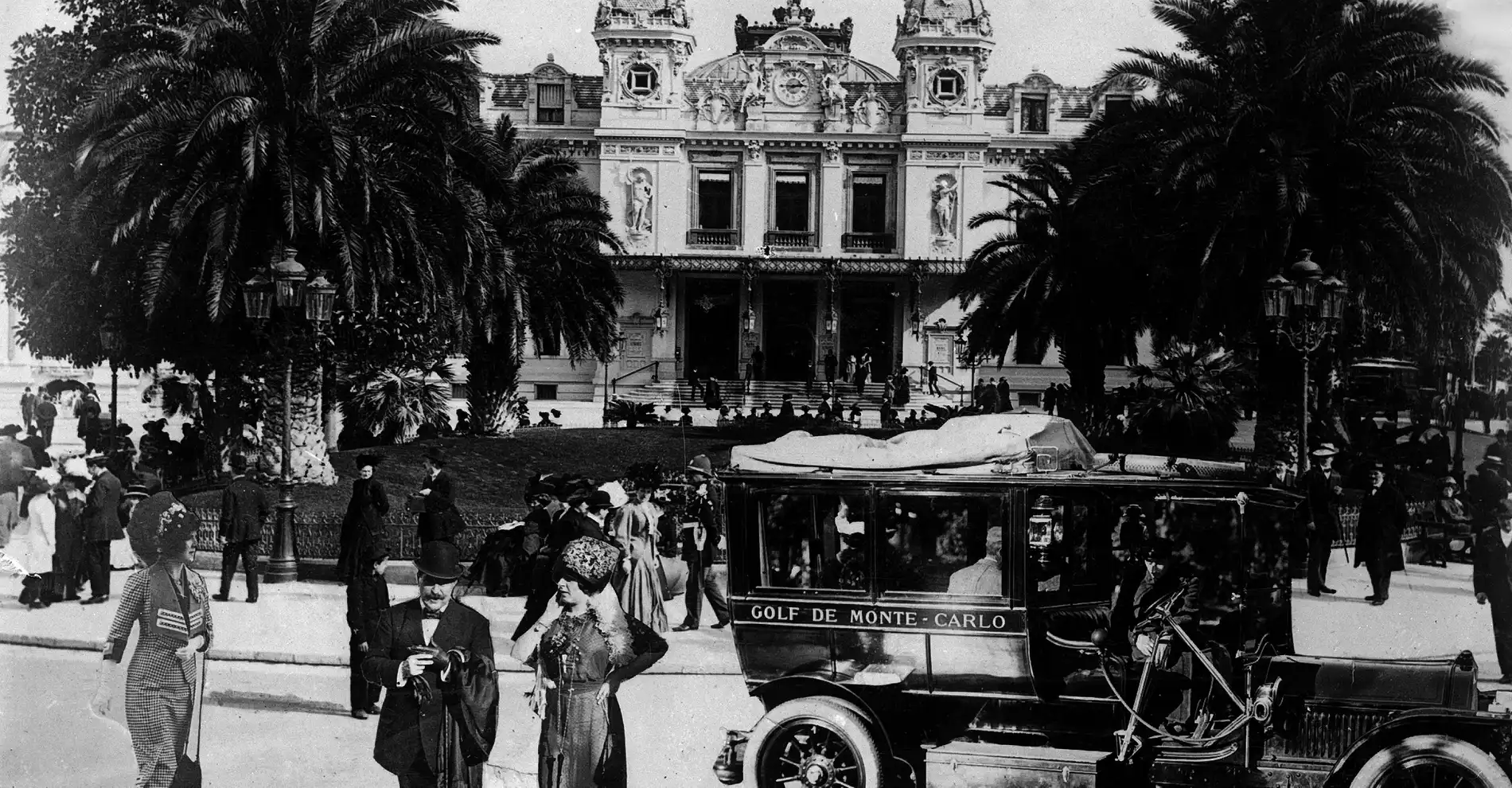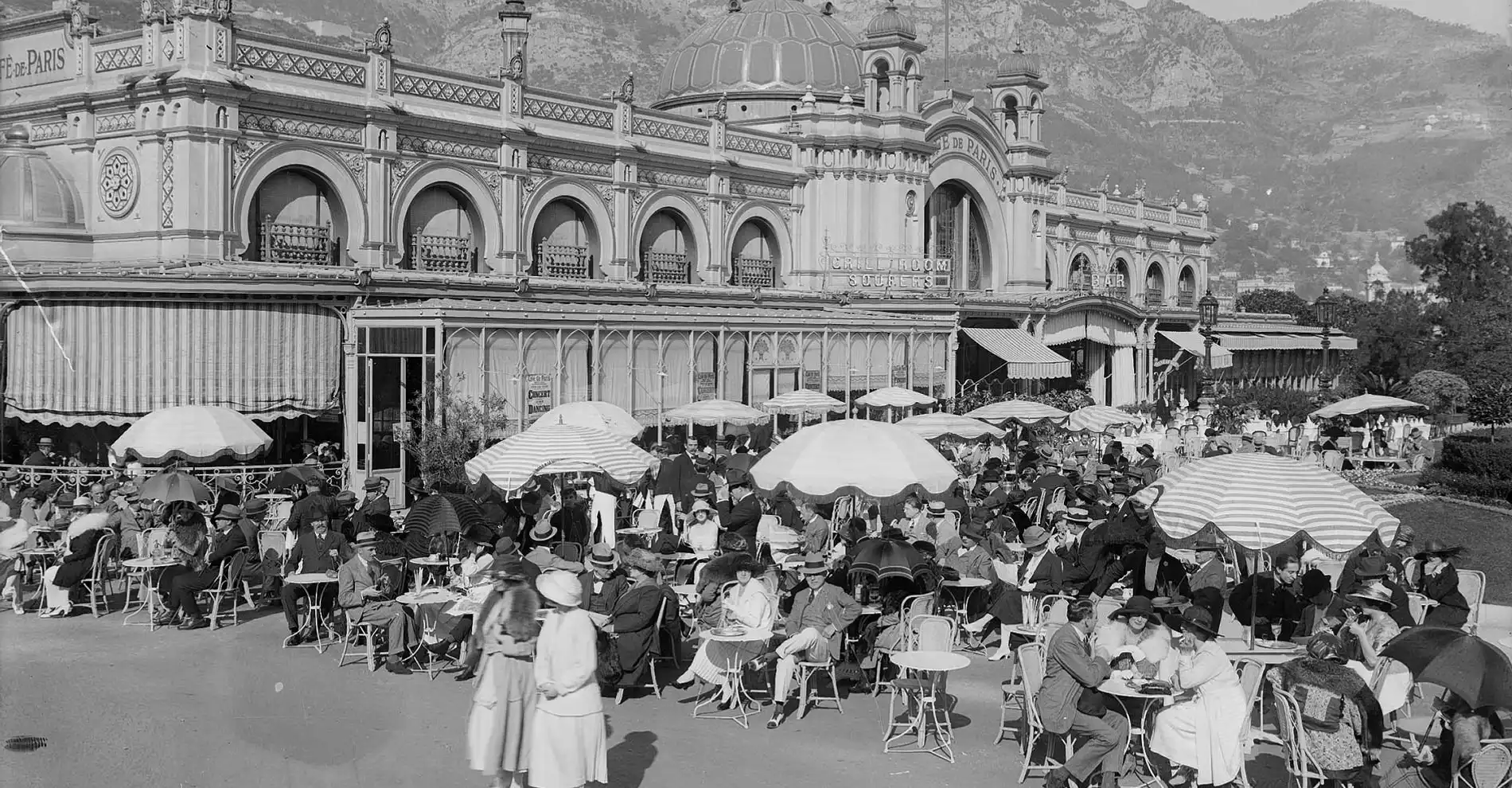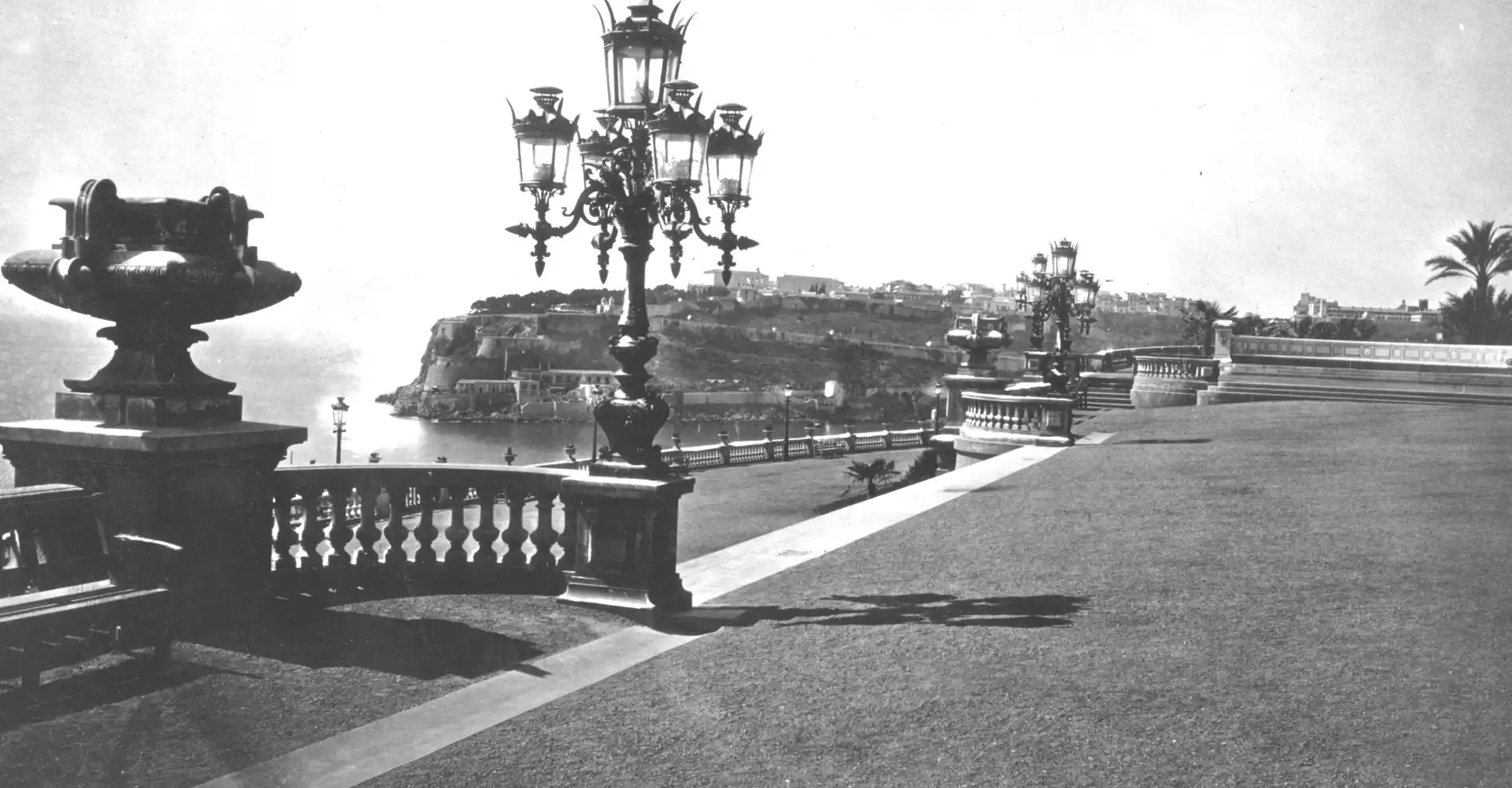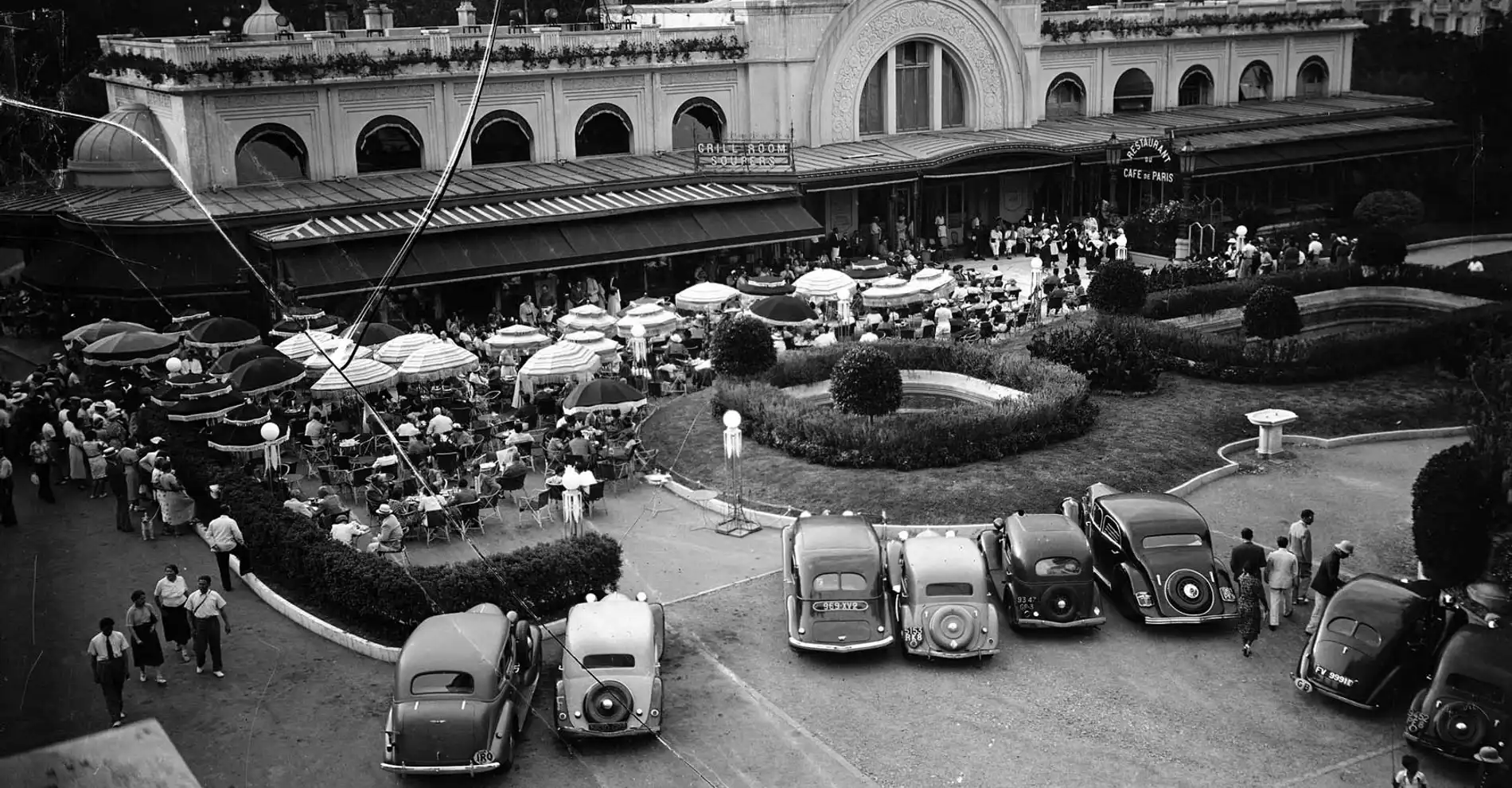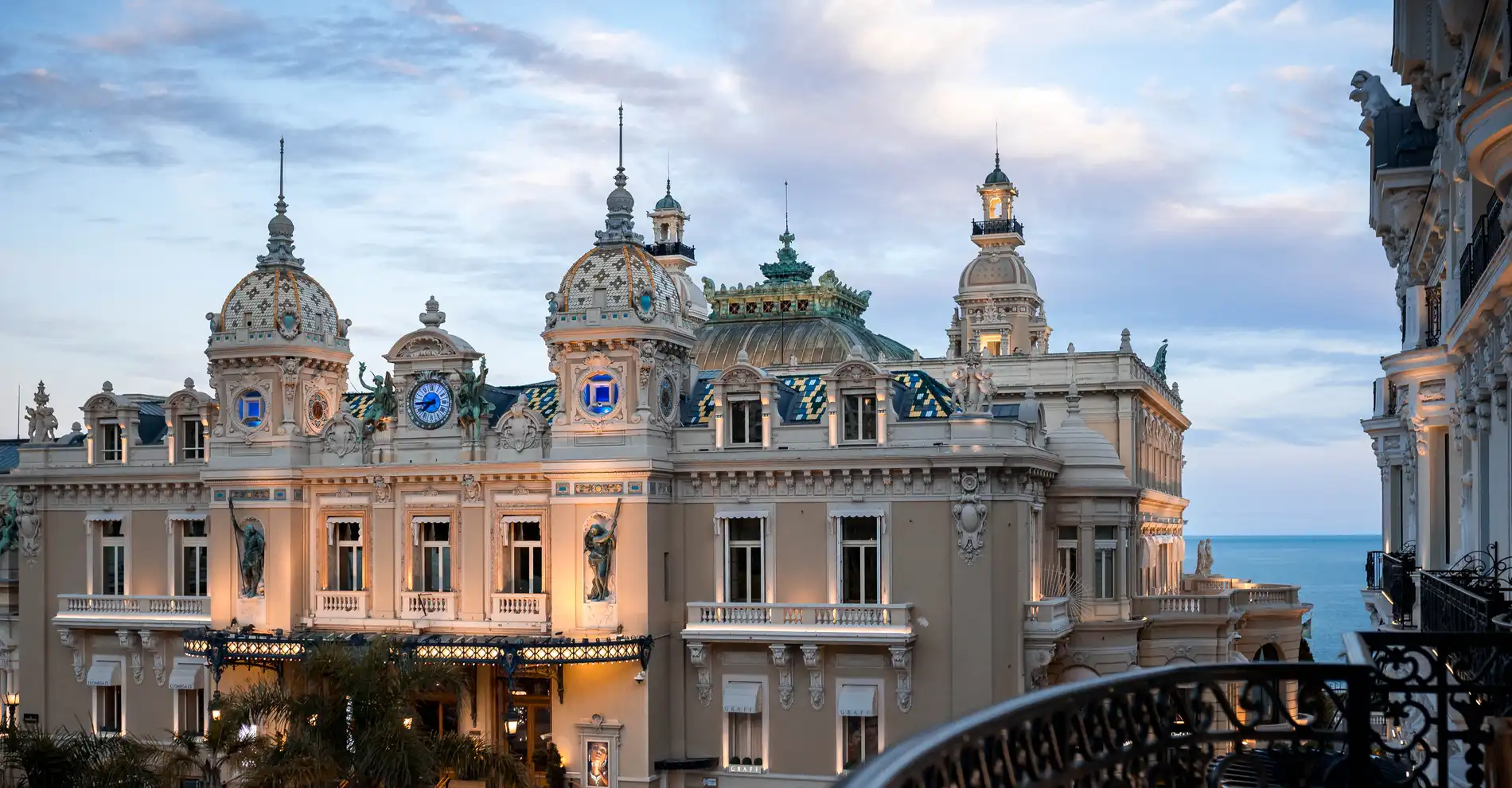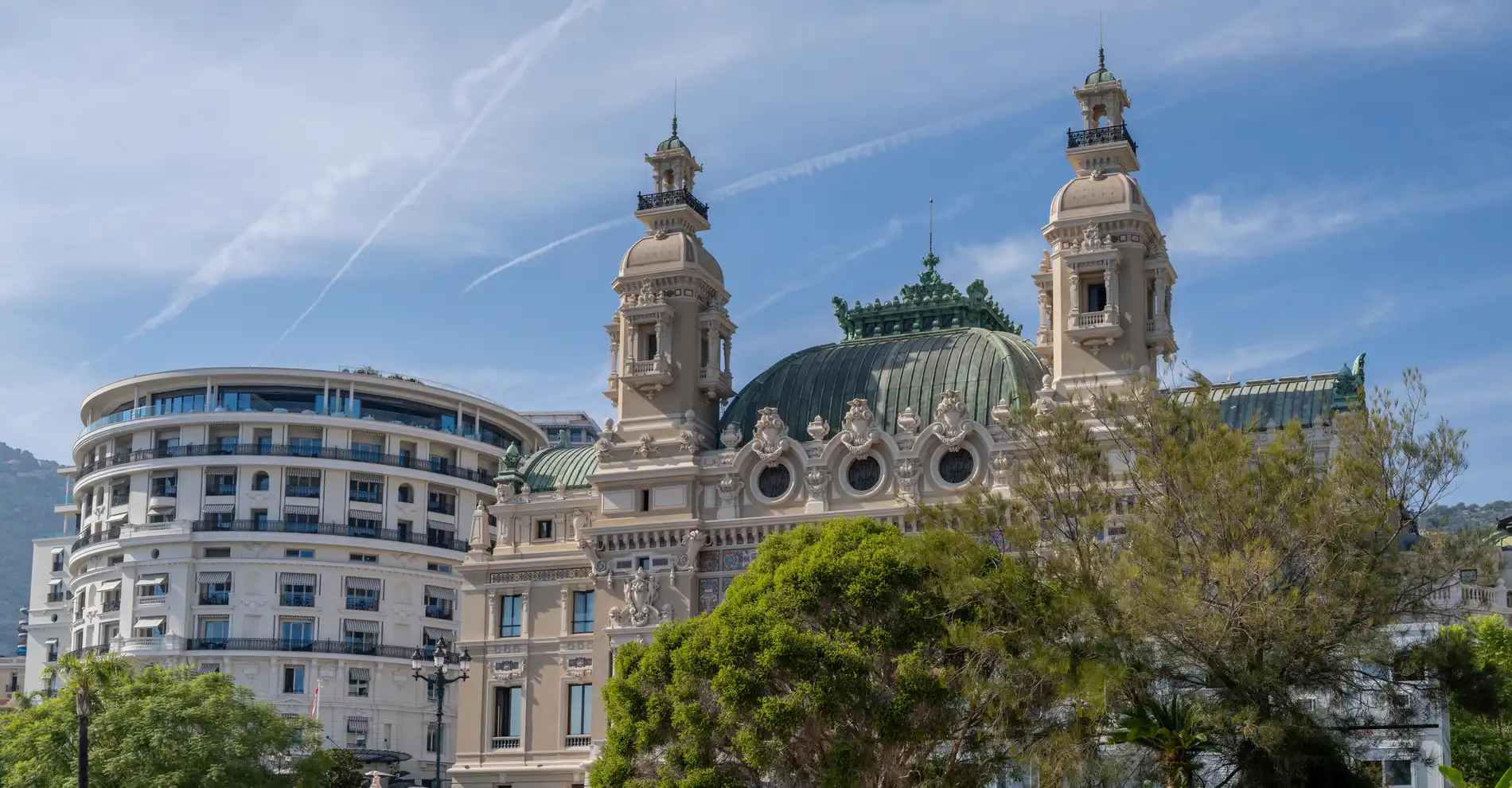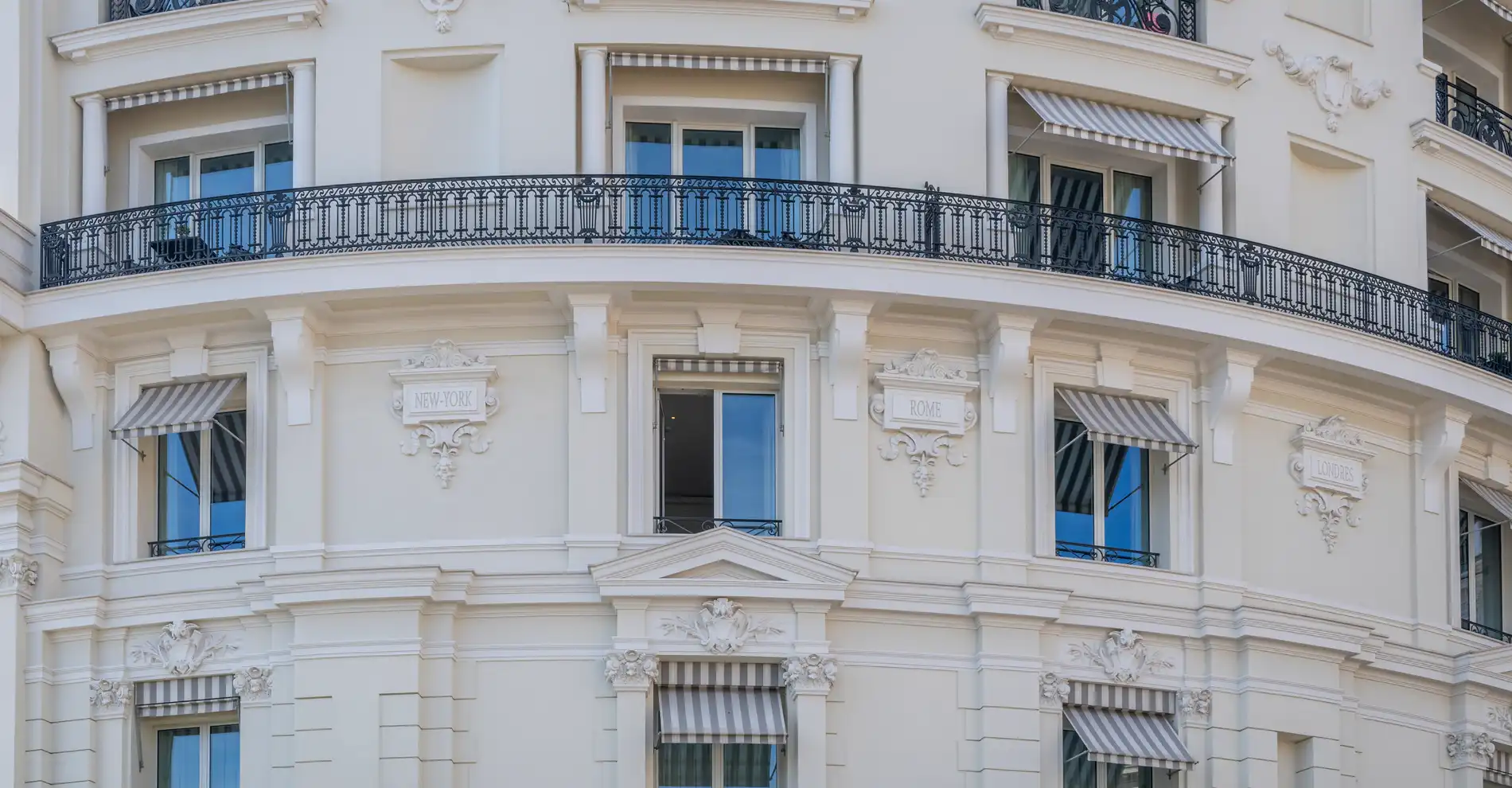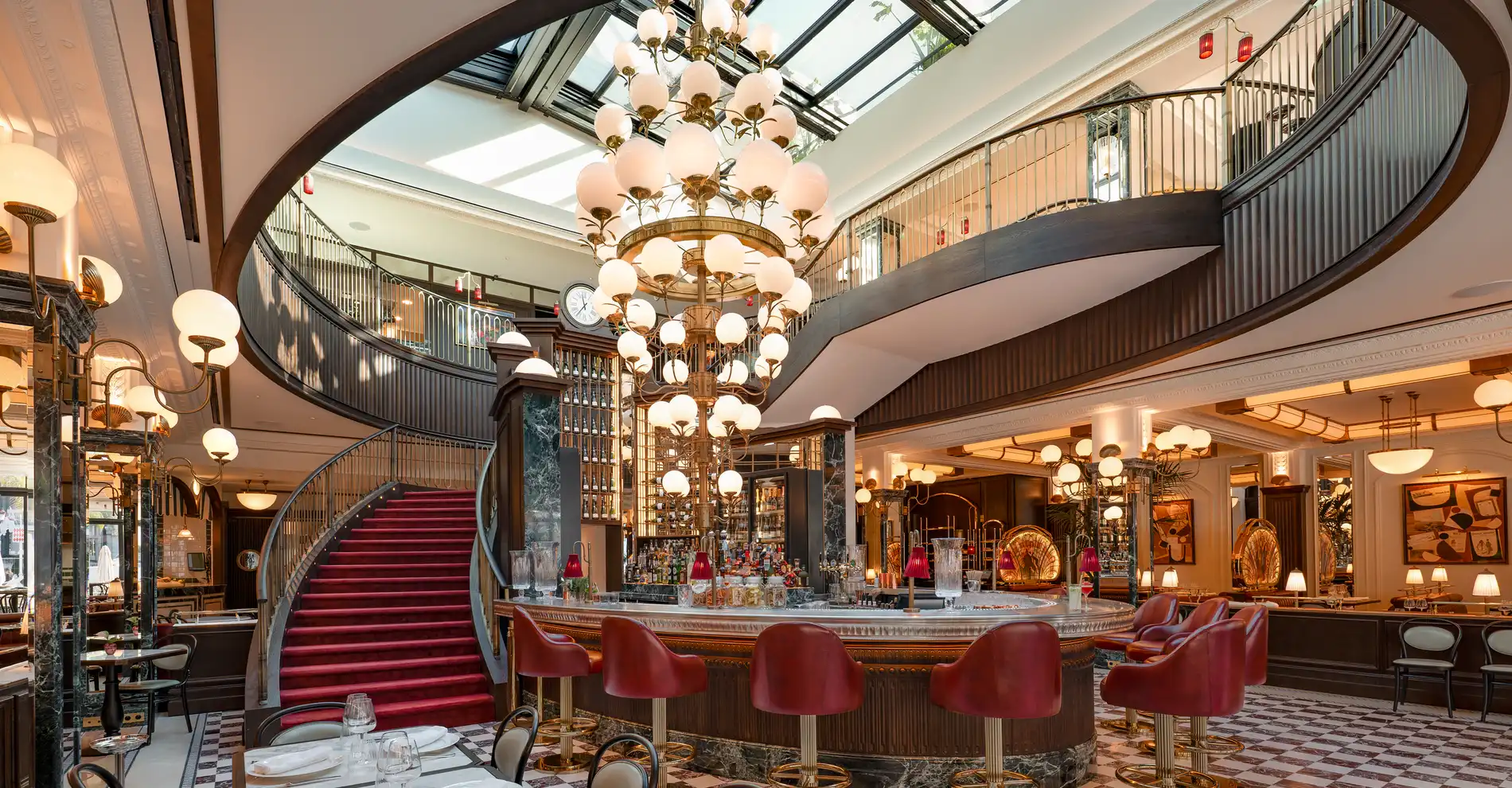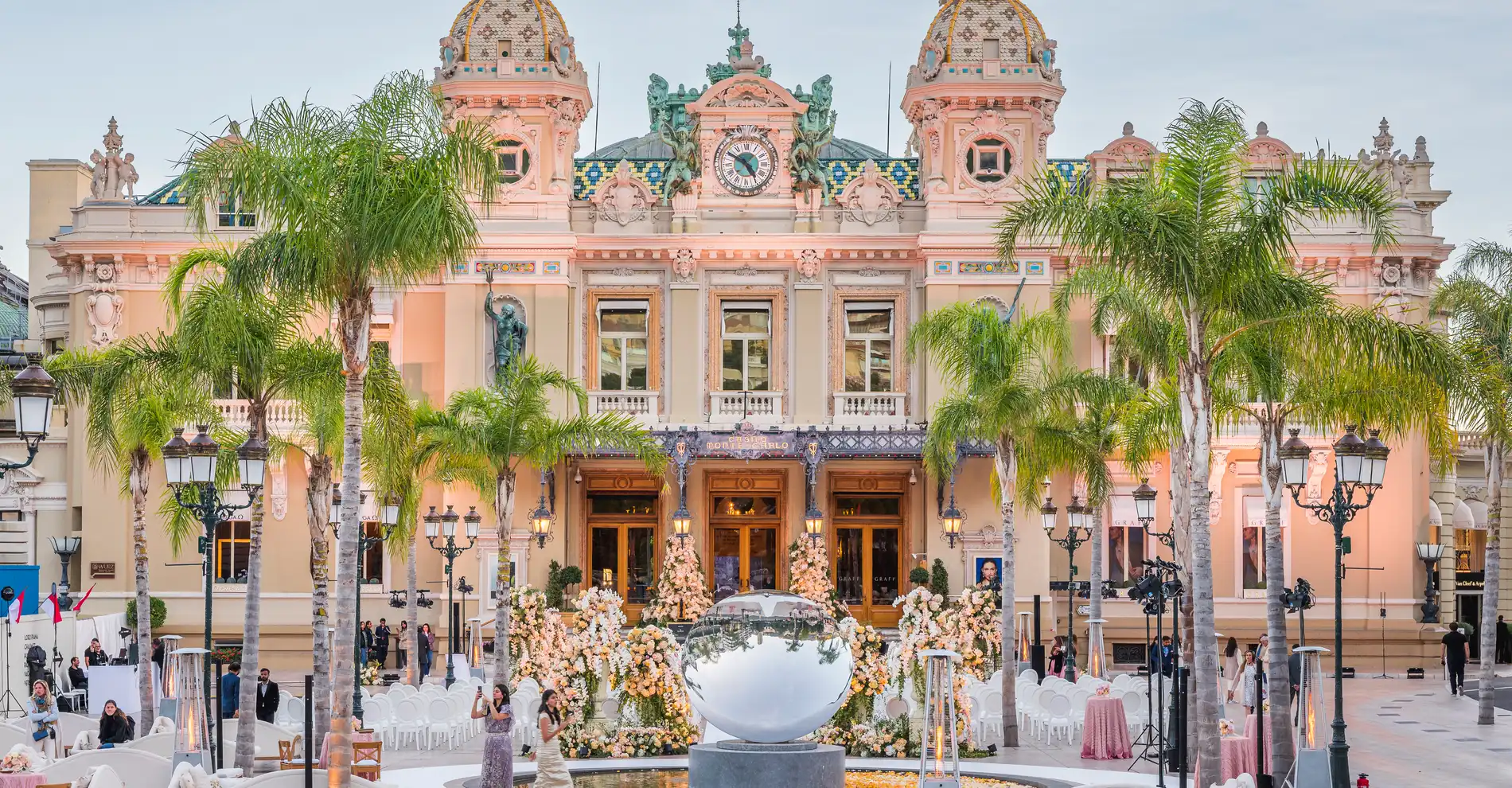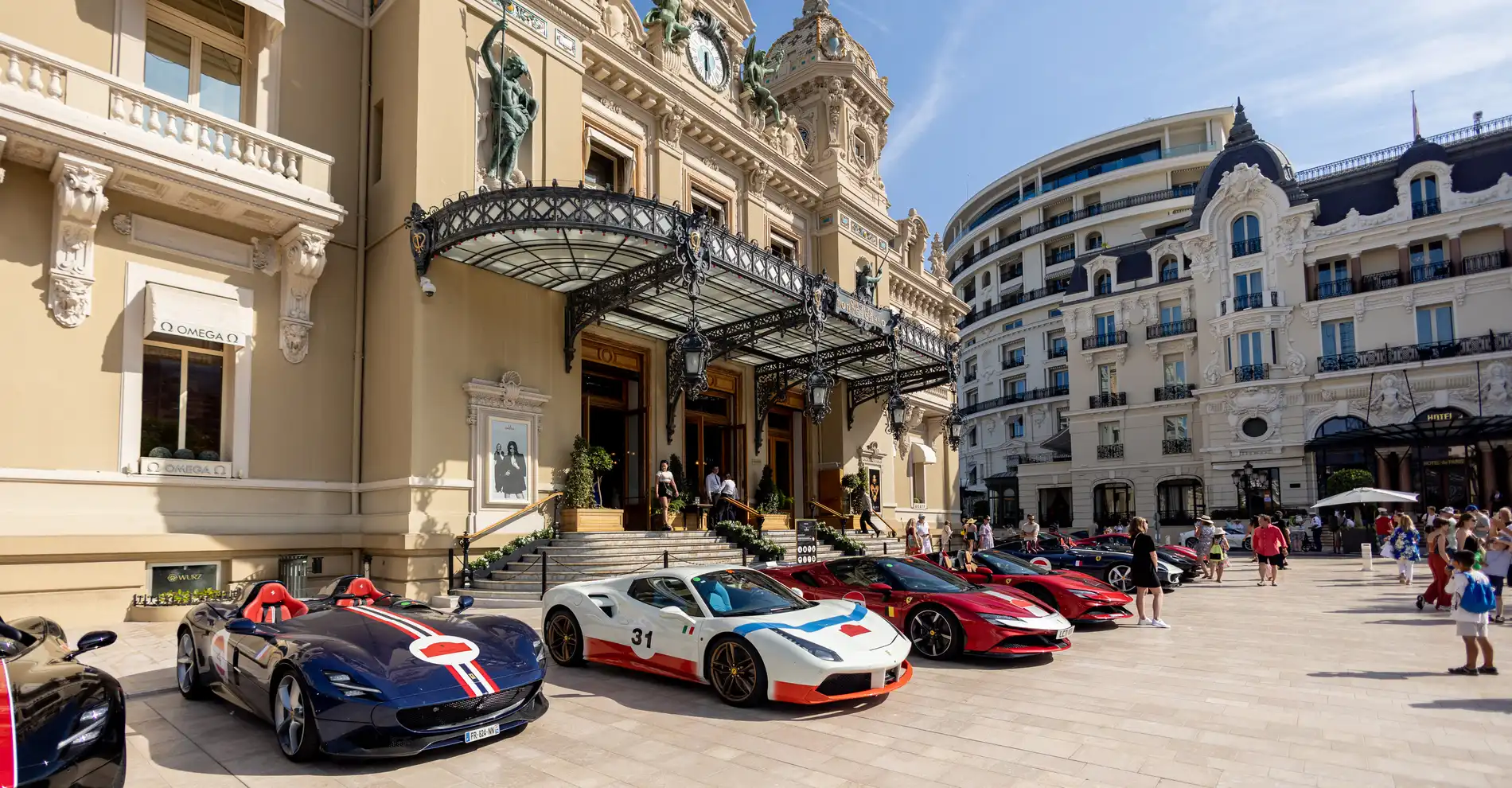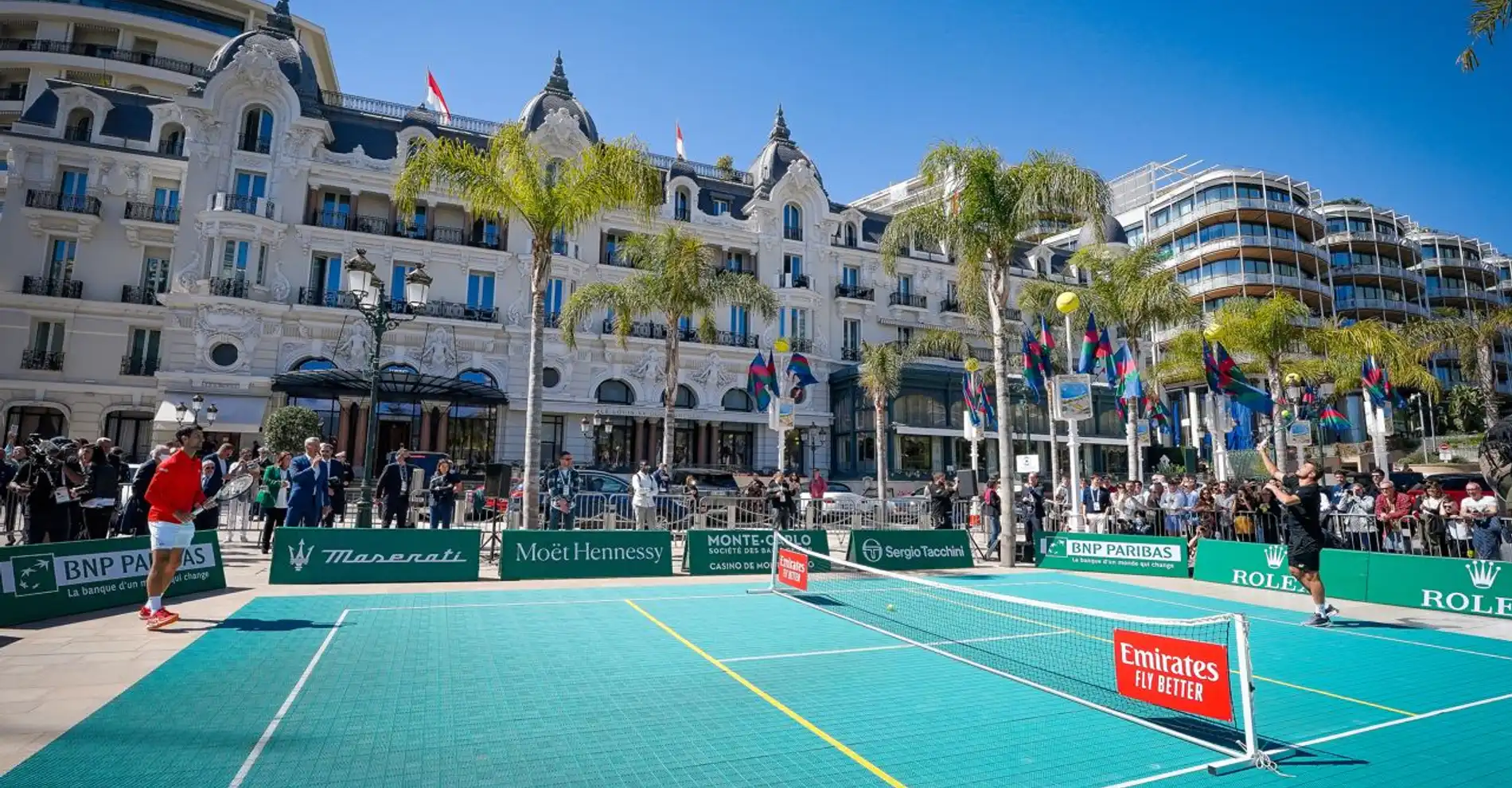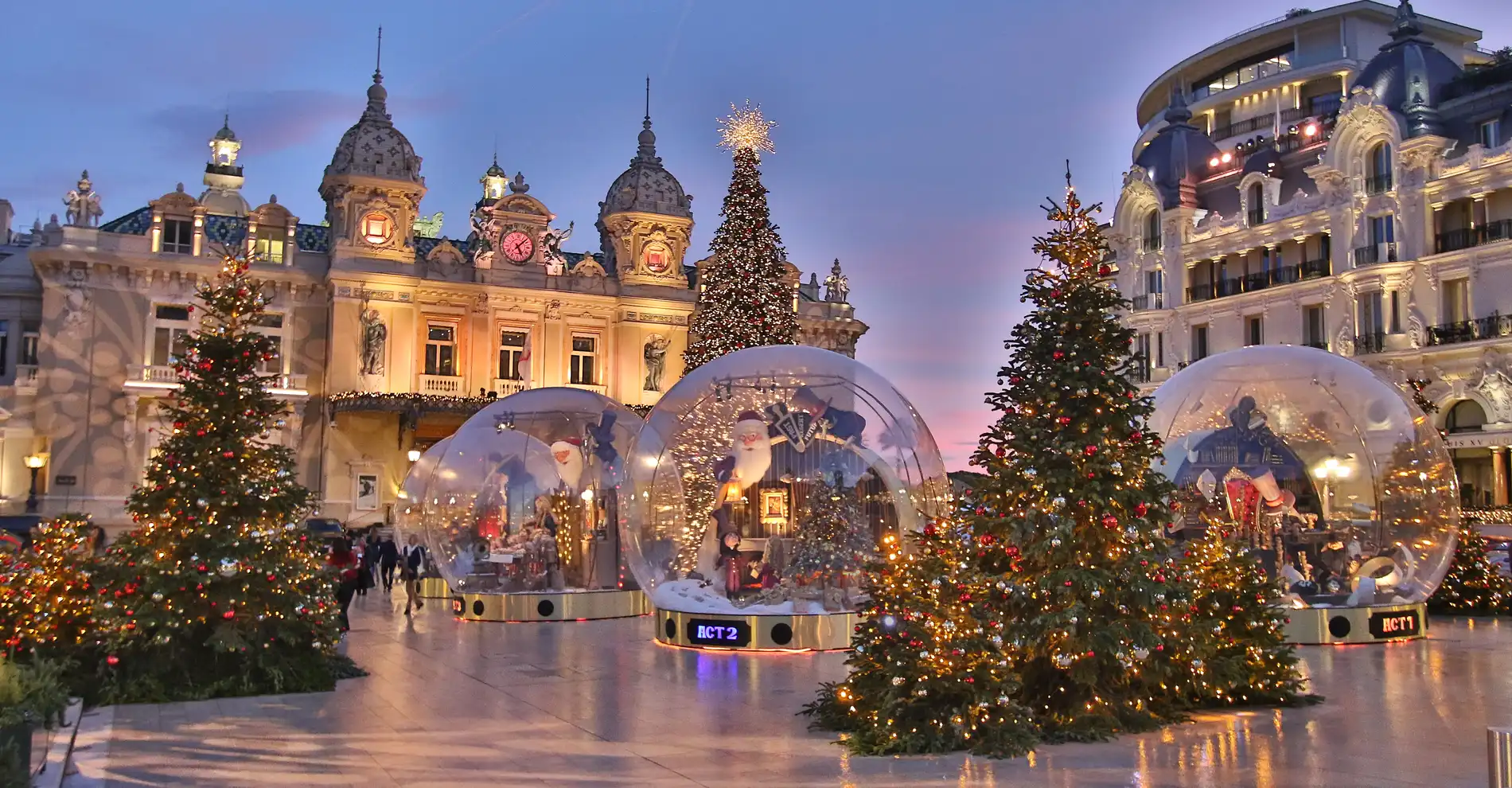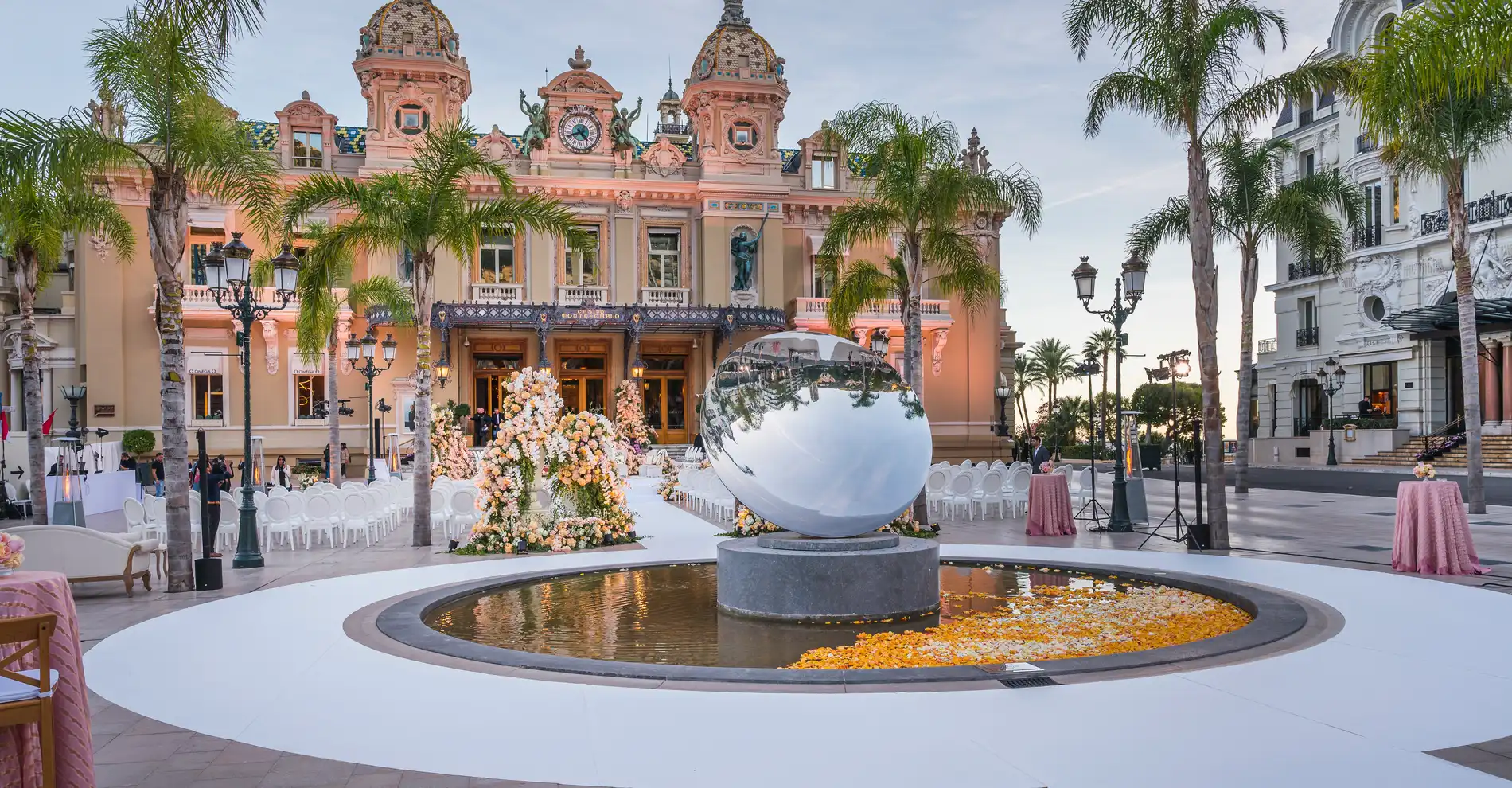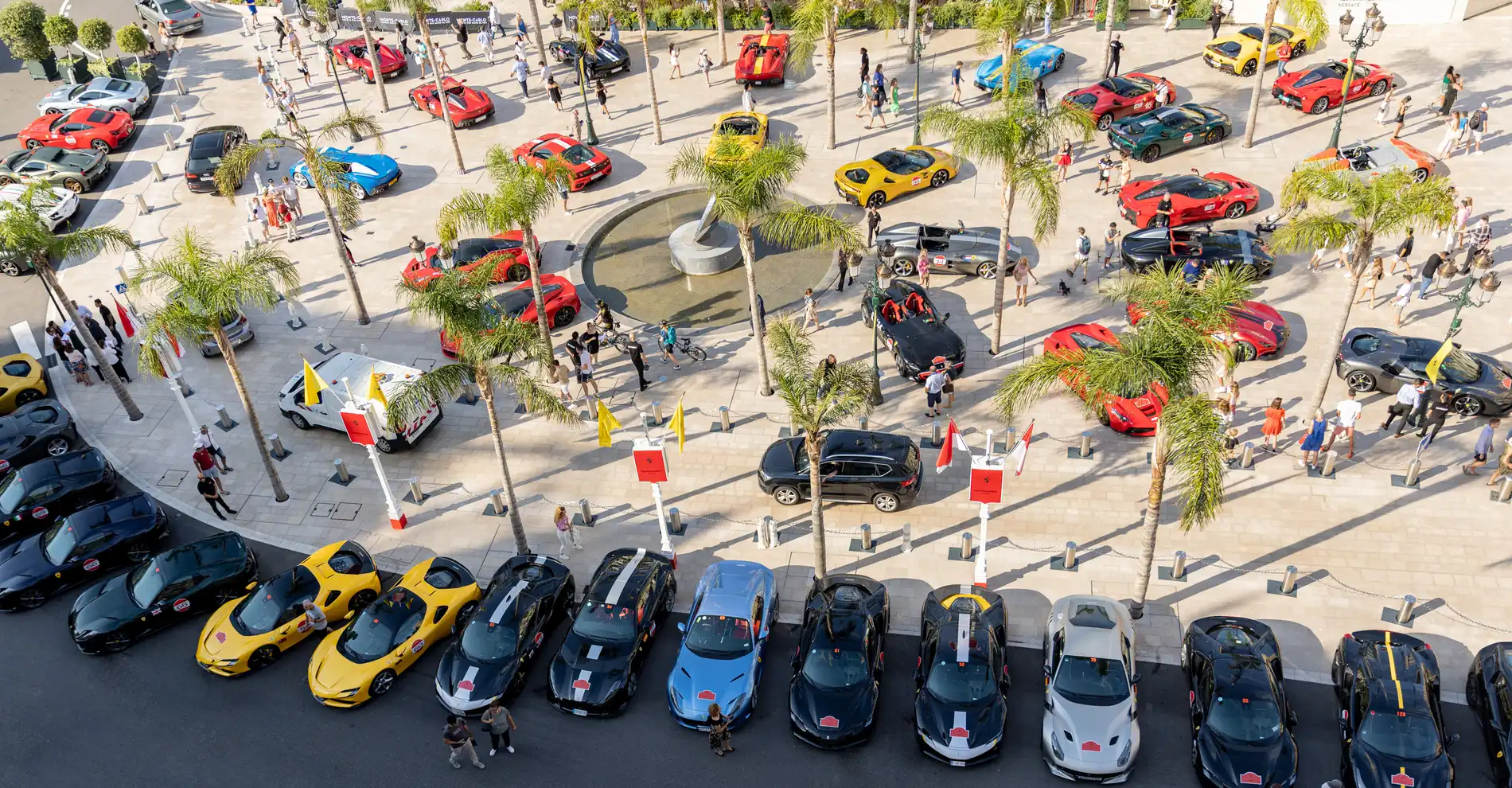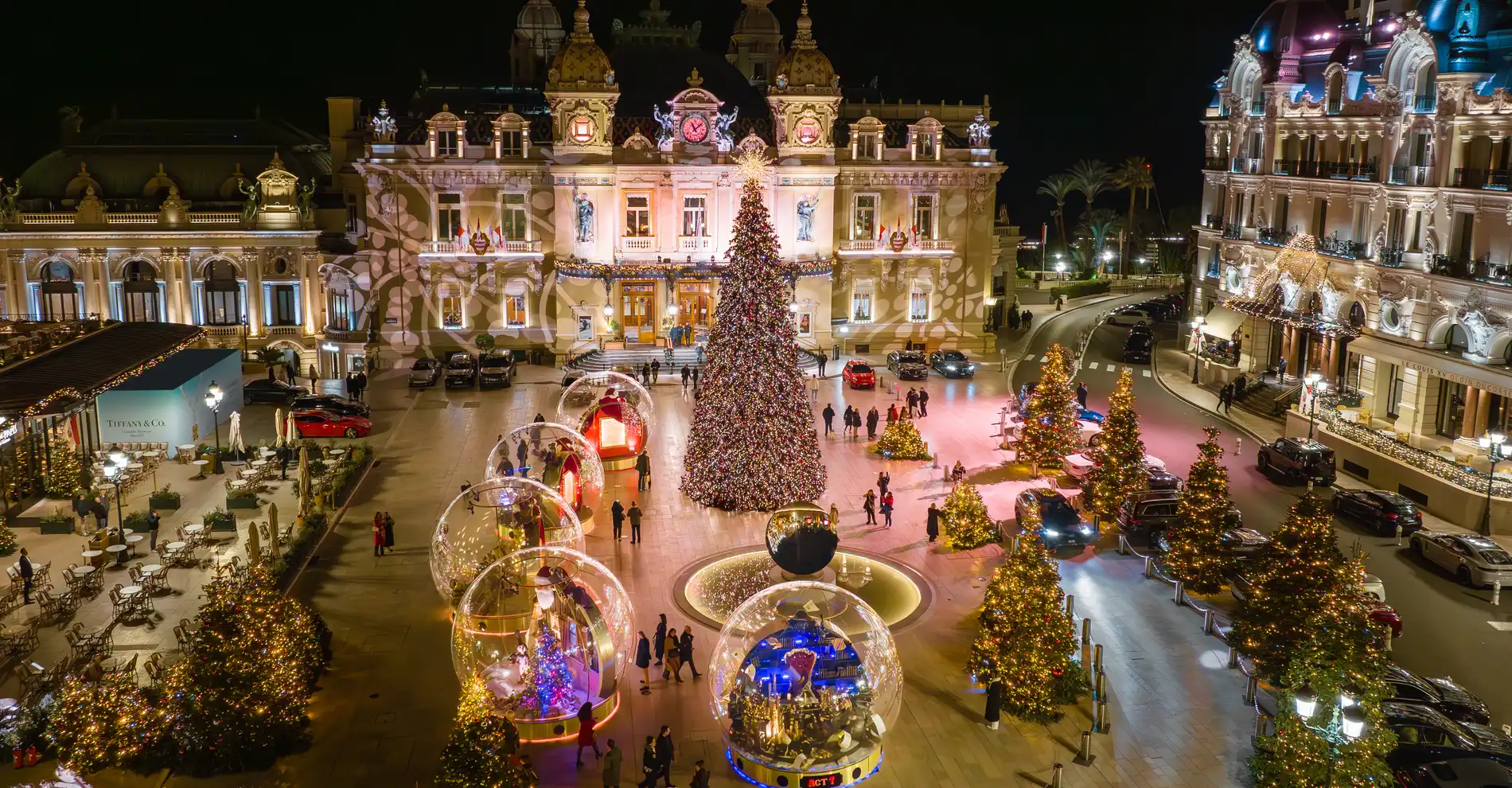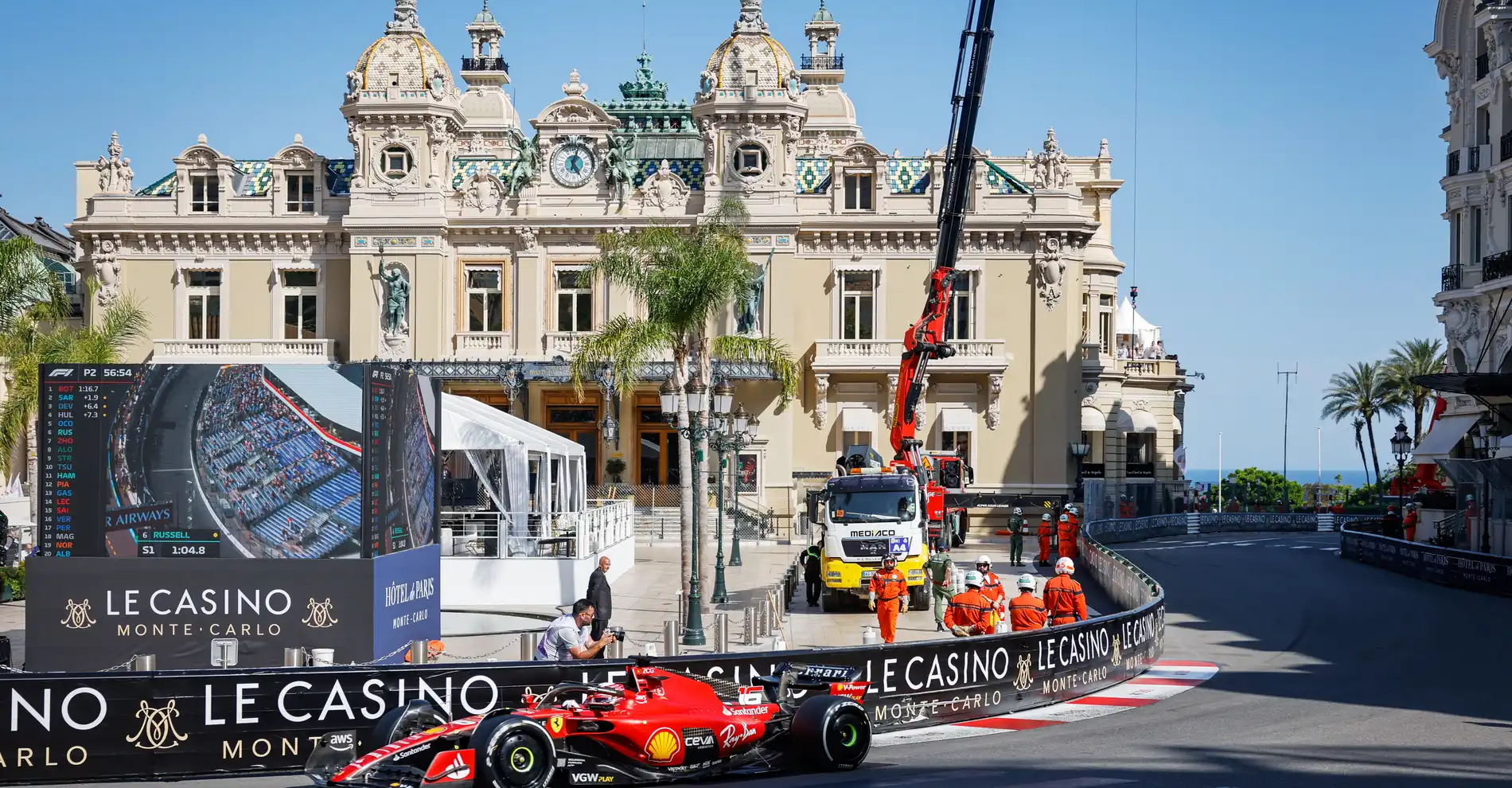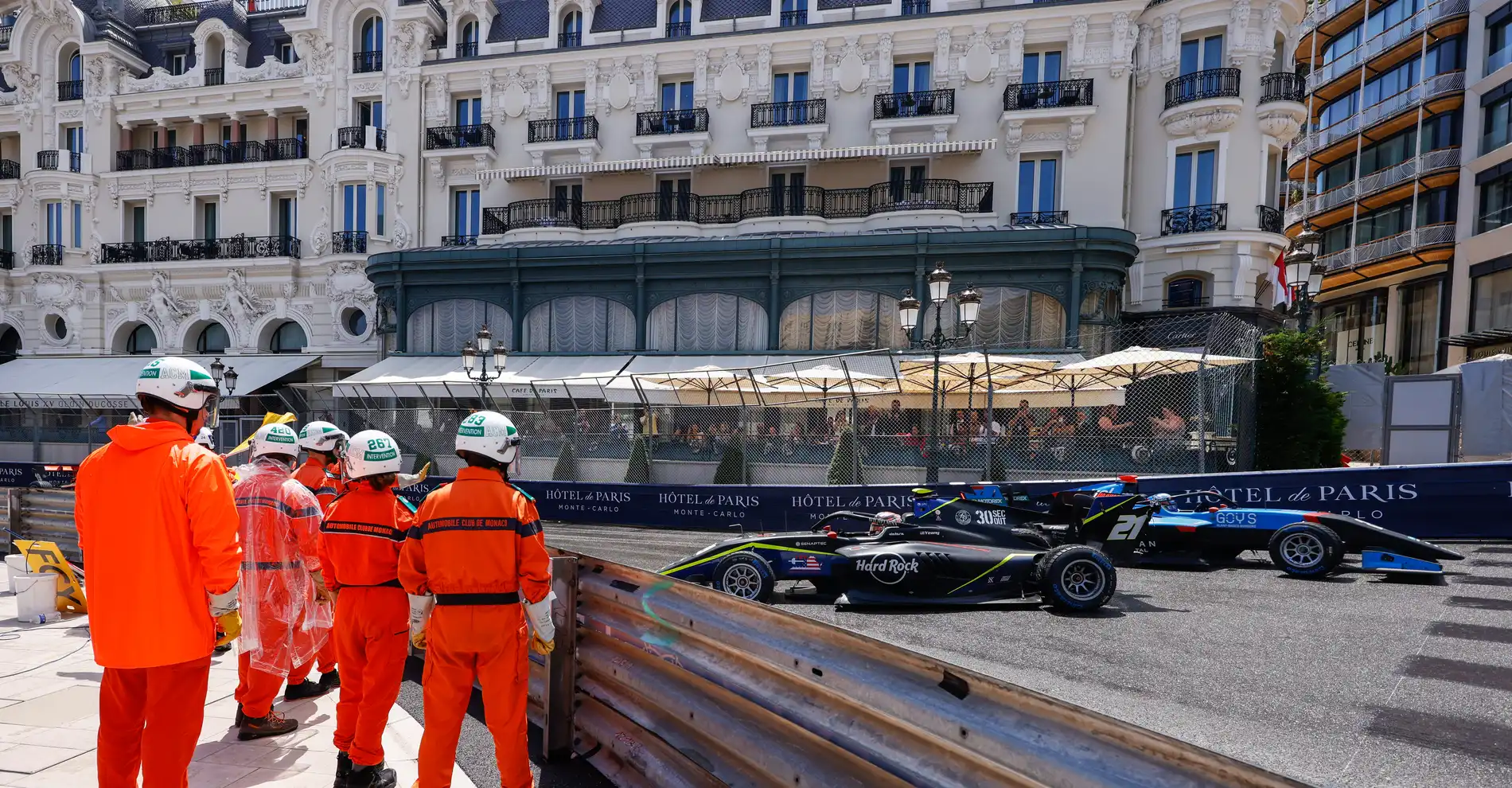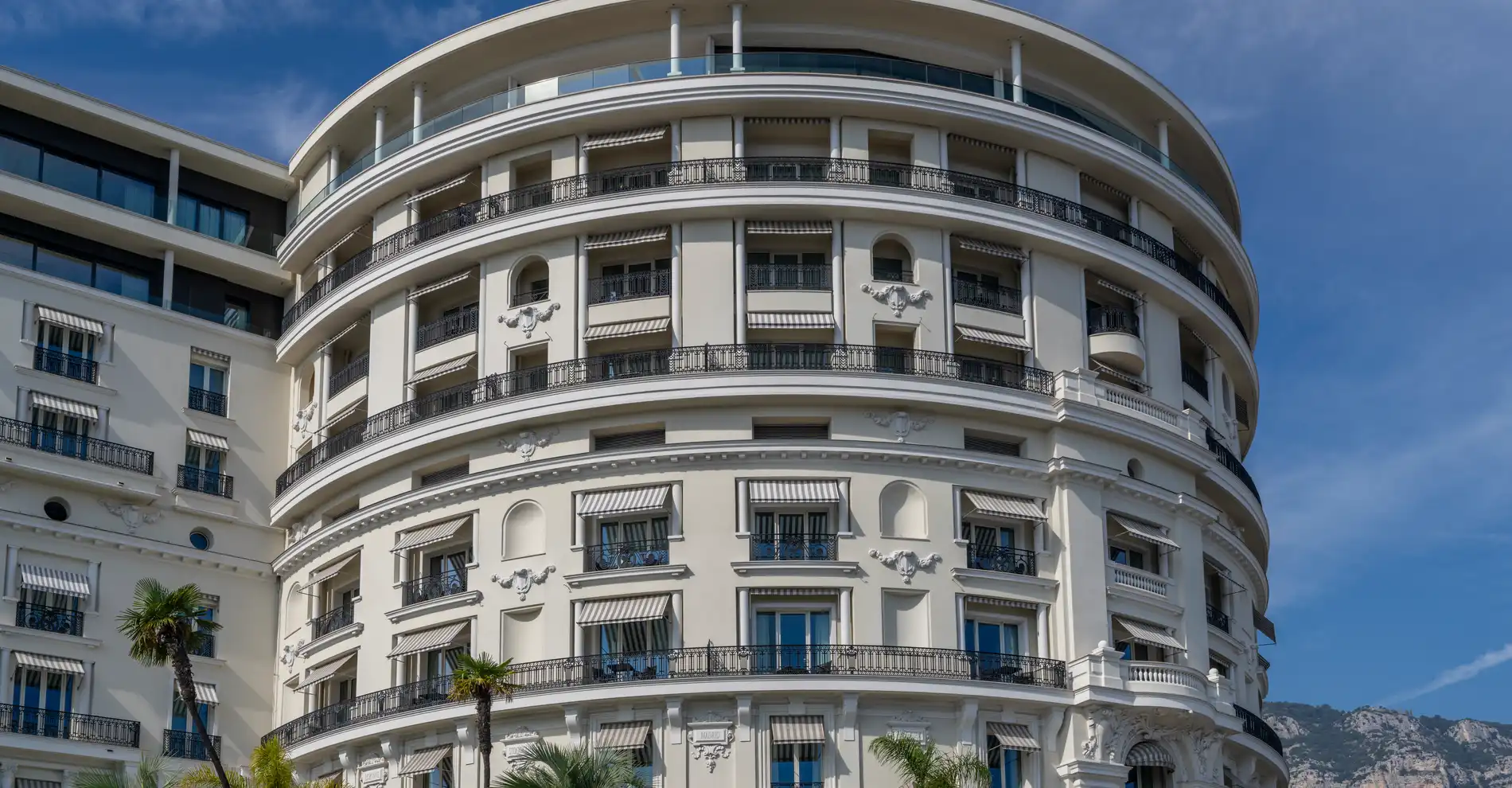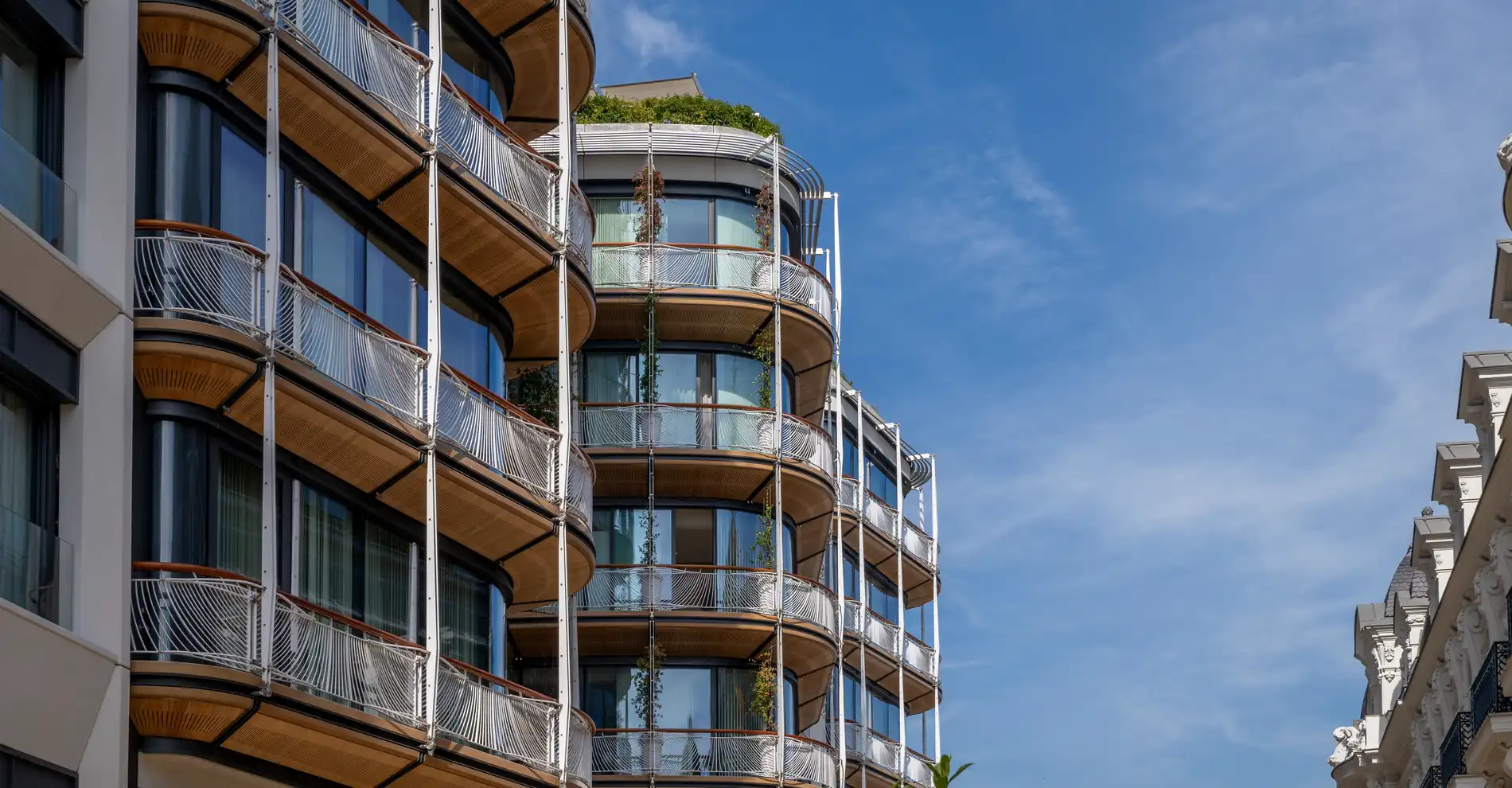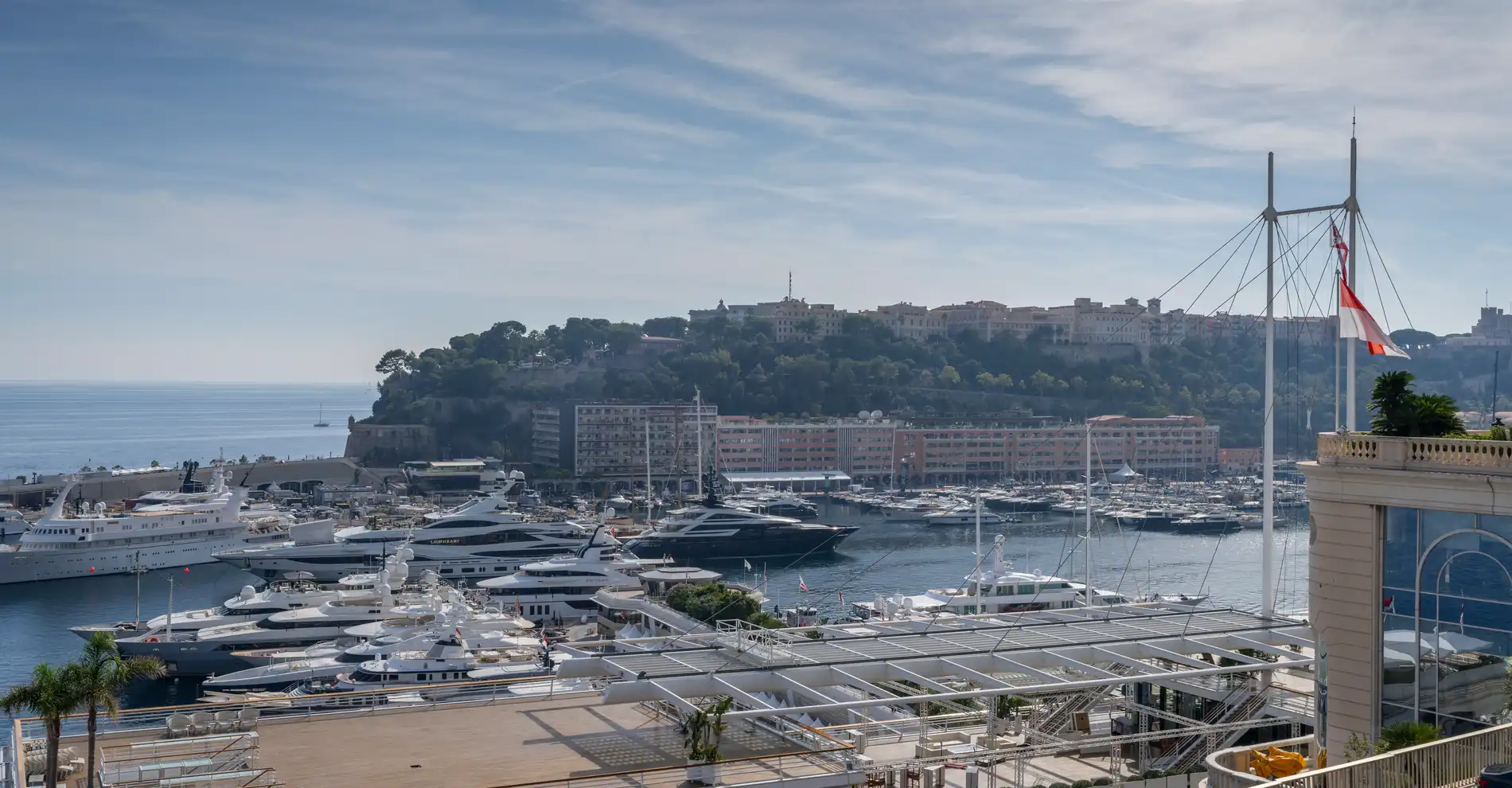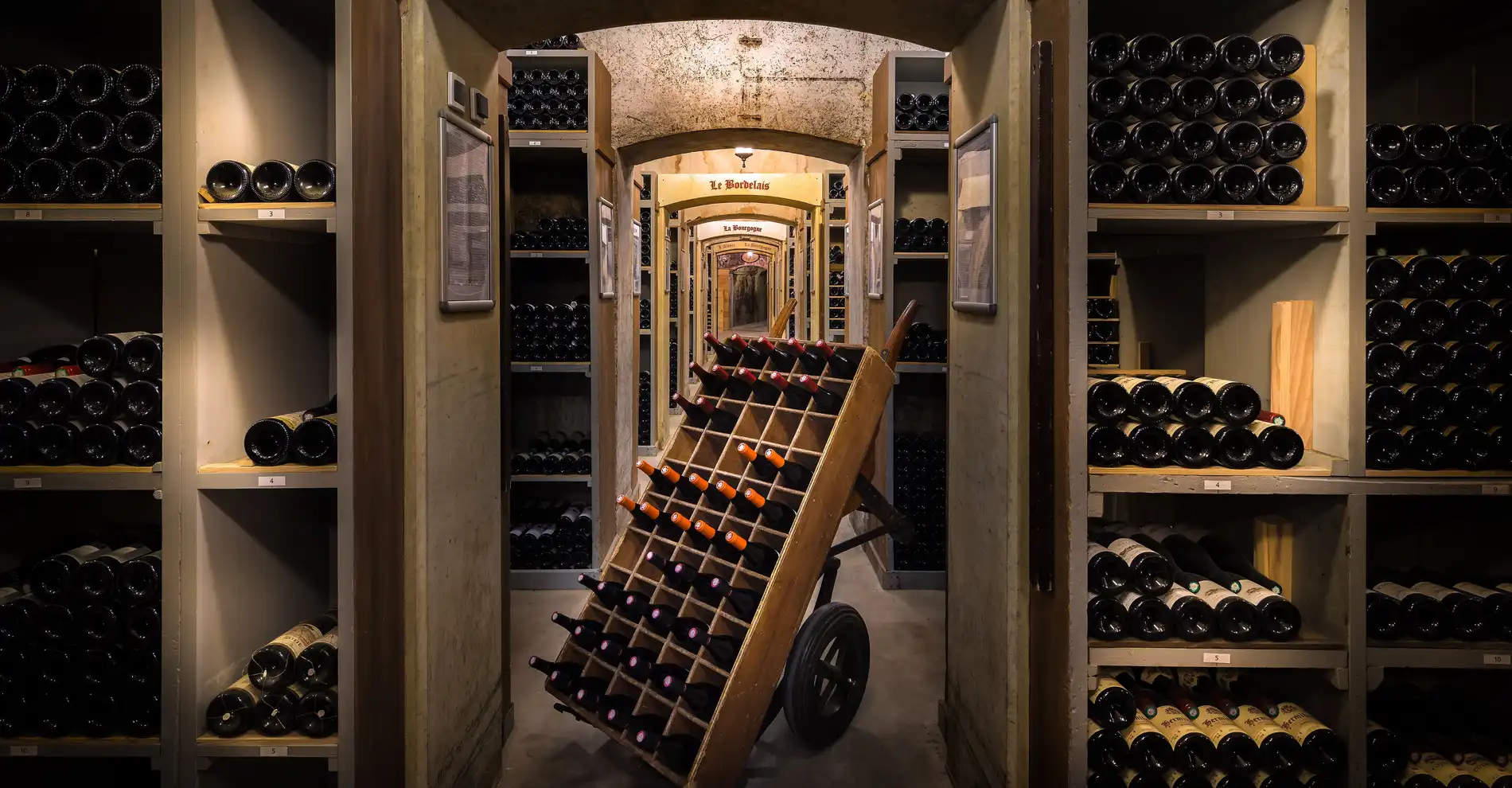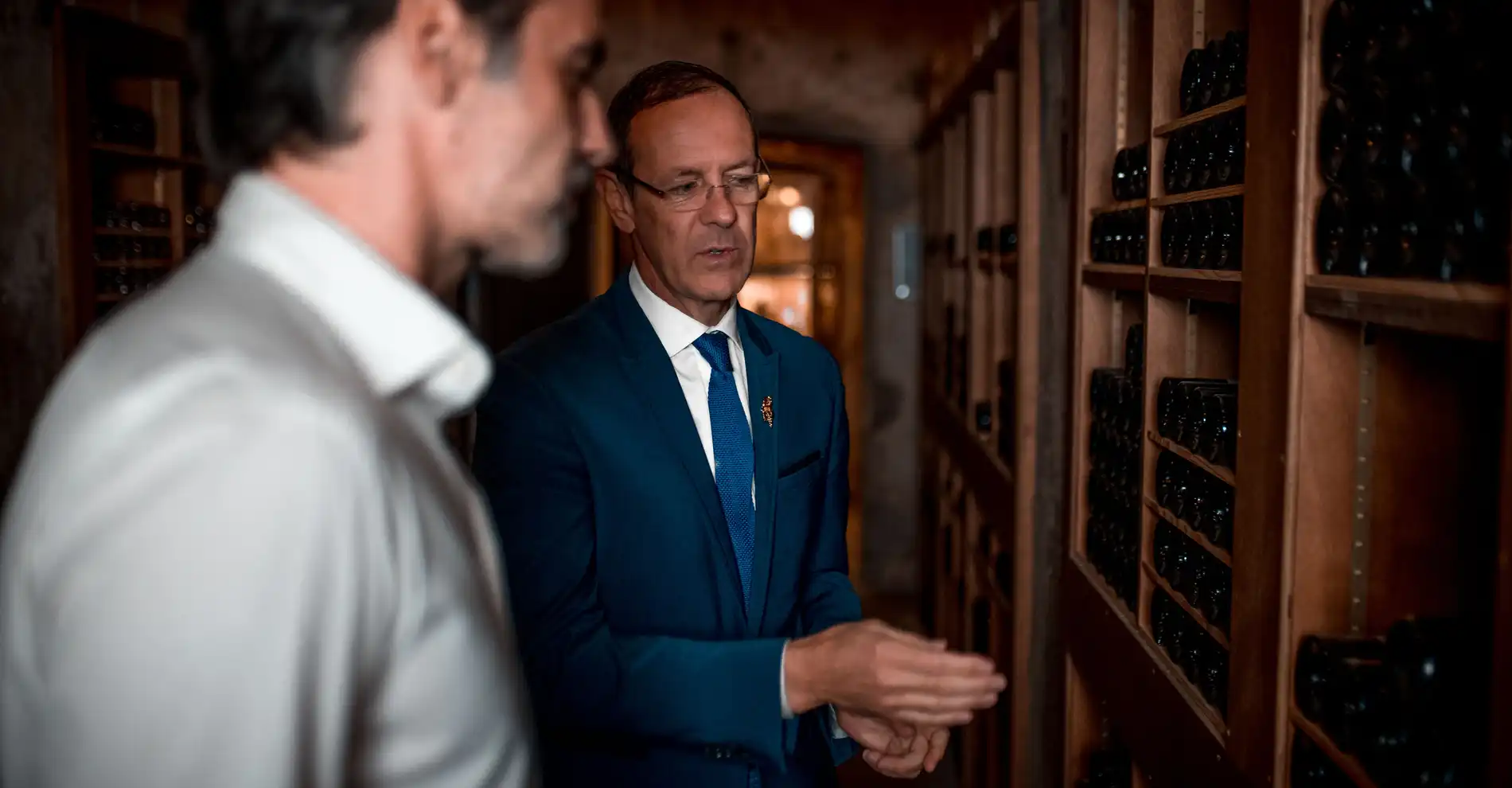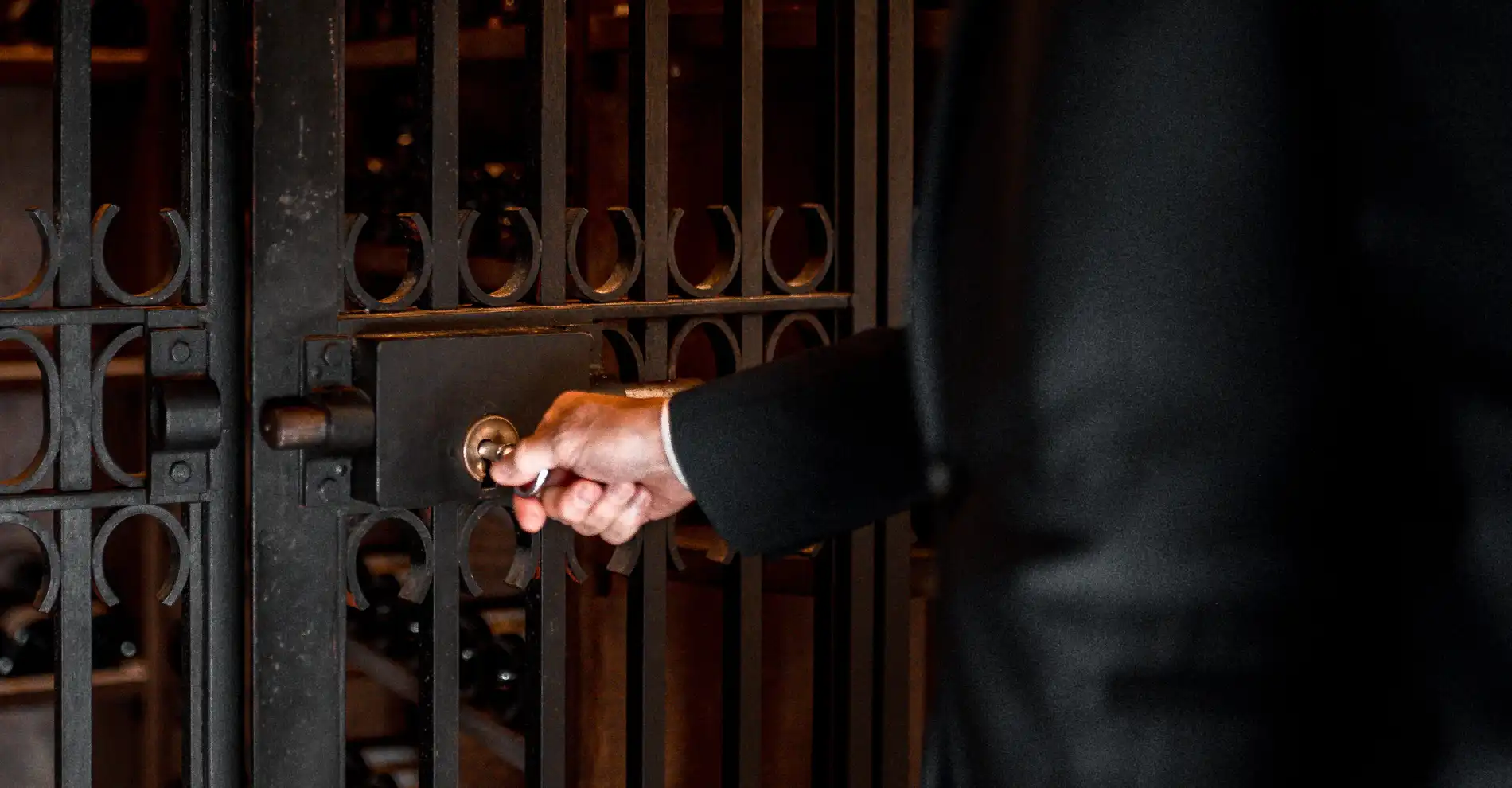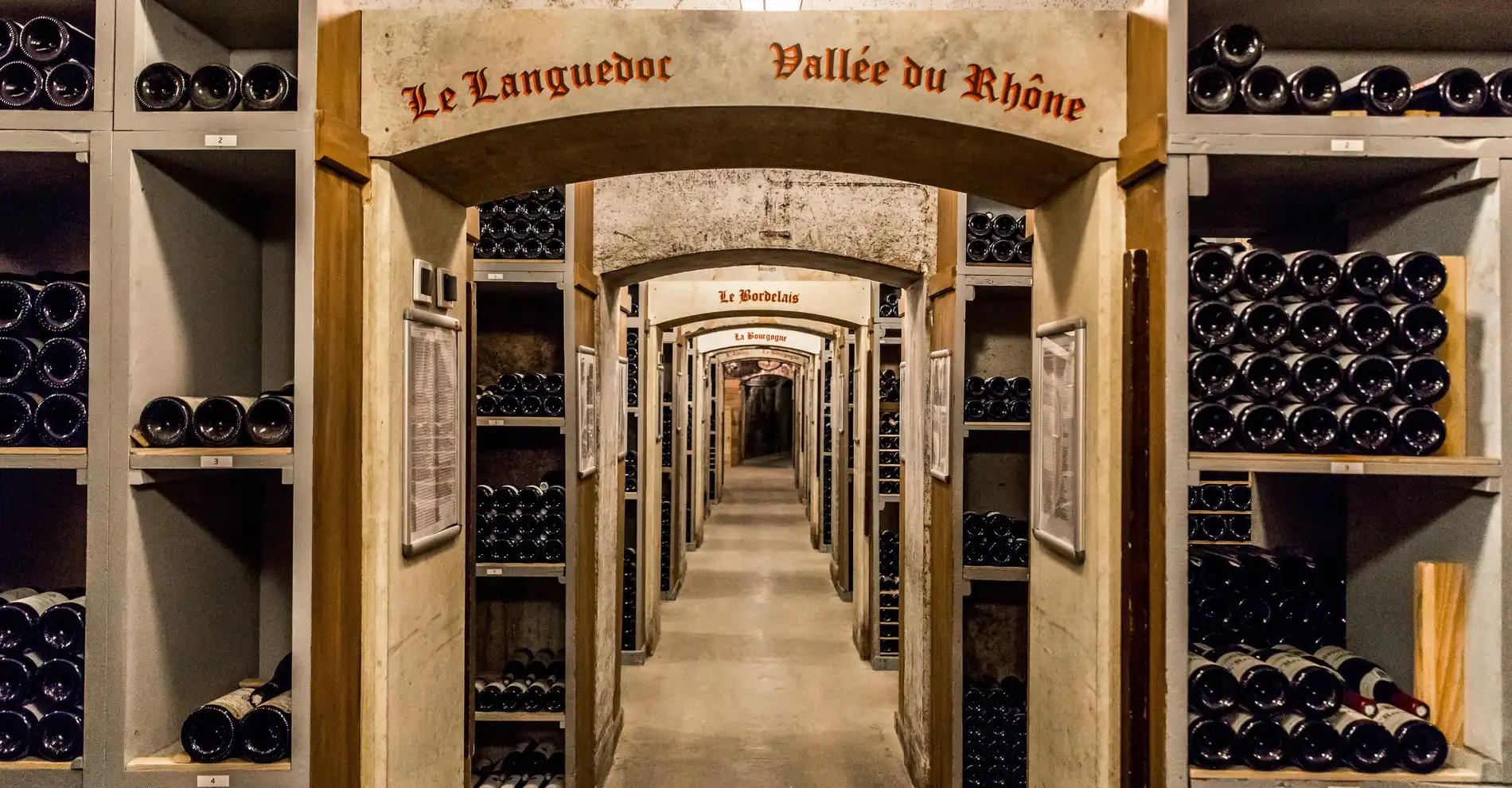Published on January 05, 2024Updated on November 29, 2024
Monte-Carlo, the beating heart of the Principality, is constantly reinventing itself. The Casino de Monte-Carlo, the Café de Paris Monte-Carlo and the Hôtel de Paris Monte-Carlo are well known the world over, but we may not be aware that this is where the train stopped, and that there, beneath our feet, lies a veritable underground maze... For this stroll, we have a distinguished guest: Sébastien Vimercati, game table manager at the famous Casino de Monte-Carlo, game instructor at the Monte-Carlo Société des Bains de Mer... and a Monegasque, of course!
Where it all began: Place du Casino
On a sunny afternoon in October, we meet Sébastien Vimercati on the steps of the Casino de Monte-Carlo. We're in his workplace, but it's much more than that: we're in the heart of a fascinating district, imagined by François Blanc 160 years ago. At the time, this was the Spélugues plateau, and although you could see the sea, the Rock and the mountains inland, it was almost deserted. By decree, the Prince of Monaco authorised François Blanc to completely redesign the site. Keep the name "Spélugues"? The idea doesn't appeal to the businessman... "In German, it means 'dubious establishment'. In Old French, 'spélongue' meant a cut-throat,” smiles Sébastien Vimercati. A change was needed... Monte-Carlo, literally "Mount Charles", was chosen for the new district. The Casino de Monte-Carlo was built, followed by the Hôtel de Paris Monte-Carlo and the Café Divan (later Café de Paris Monte-Carlo, now superbly renovated). We look at the exterior of the casino, which "looks as it did in the early 1900s". When Charles Garnier created the extensions inside the building - starting with the opera hall that now bears his name - he also redesigned the façade of the Casino de Monte-Carlo.

WHAT YOU NEED TO KNOW: "The current appearance dates from the early 1900s," notes Sébastien Vimercati. In fact, when Charles Garnier was creating the extensions to the interior of the building - starting with the opera hall that now bears his name - he was also recreating the façade of the Casino de Monte-Carlo.
Let’s find out more about Sébastien Vimercati
With a father who was director of gaming at Monte-Carlo Société des Bains de Mer, Sébastien Vimercati could have dreamed of becoming a croupier. He was initially interested in chemistry, but after a few experiments, he returned to the fold and joined the company as a head hunter. A great way to find out everything about the place and the services! At the age of 21, he began training in gaming, first with slot machines, then with table games. Today, he is a table manager, and it is he who trains the croupiers in the casino's various games.

"The turnstile": an iconic square
"The turnstile is what some Monegasques call the Place du Casino," says Sébastien Vimercati. It's true that everything starts there and that everything seems to lead to Monaco. Completely redesigned a few years ago, the square is a lively and cheerful place. The trees that line it "can be removed and replaced in a matter of minutes", our guide tells us.
"Place du Casino is infinitely adaptable!"
A quality that makes it possible to imagine all sorts of events and happenings, each crazier than the last, from concerts to golf matches to tennis courts (not to mention car races). Let your imagination run wild!
Make a wish...
In Monaco, a number of places and objects are said to bring good luck... Such is the case, for example, with the knee of the equestrian statue in the lobby of the Hôtel de Paris Monte-Carlo. But the favourite spot to make a wish remains, as everywhere else in the world, the fountain. It's the one that surrounds Anish Kapoor's work, which receives offerings from visitors every day. The coins recovered by Monte-Carlo Société des Bains de Mer during maintenance of the fountain are donated to Monegasque associations.
From (exotic) garden to (formal) garden
Turning our backs on the Casino de Monte-Carlo, we head for the Petite Afrique garden, whose story Sébastien Vimercati tells us: "At the end of the 19th century, the Prince of Monaco dreamt of a place that would remind him of the summer season, even in the middle of winter." With the weather being good all year round, or nearly so, he asked the landscapers to bring in plants and trees from the southern hemisphere. "It's a very unusual garden, with a wide variety of trees." A change of atmosphere: just cross the road to enter the Boulingrins garden, created at the same time as its exotic neighbour. This French-style garden offers a superb view of the square, the casino and the Mediterranean Sea.
Heading for the lower part of Monte Carlo
We now pass behind the Café de Paris Monte-Carlo to reach the Buddha-Bar Monte-Carlo, from where we overlook the Fairmont Hotel. "At the time, the railway ran right through here, serving and supplying the district. It was also the venue for pigeon shooting", says Sébastien Vimercati. Their removal will reshape the area. The Loews Monte-Carlo (formerly Fairmont) was created by an American group.

An iconic part of the Grand Prix...
On the first route of the motor racing circuit, created in 1929, the racing cars passed through the Tir au Pigeon tunnel, often nicknamed the "Loews tunnel" at the time. Turn 6 was also fast becoming a legend. Even today, the bend that aficionados call the "Loews bend" is the slowest on the circuit, with drivers passing through at an average speed of... 45 km/h!

Ronaldo, Ronaldinho, Ibrahimović, Drogba and many others... We are now walking along the Promenade des Champions, a tribute to the great footballers of past and present. Our footsteps lead us above the Rainier III Auditorium. On its roof is Hexagrace, a huge, colourful fresco by Vasarely in tribute to Princess Grace.
Another view of the Casino de Monte-Carlo
Passing Botero's Adam and Eve sculpture, we arrive at the Casino Terraces: a breathtaking spot for gamblers enjoying an absolutely unique sea view.
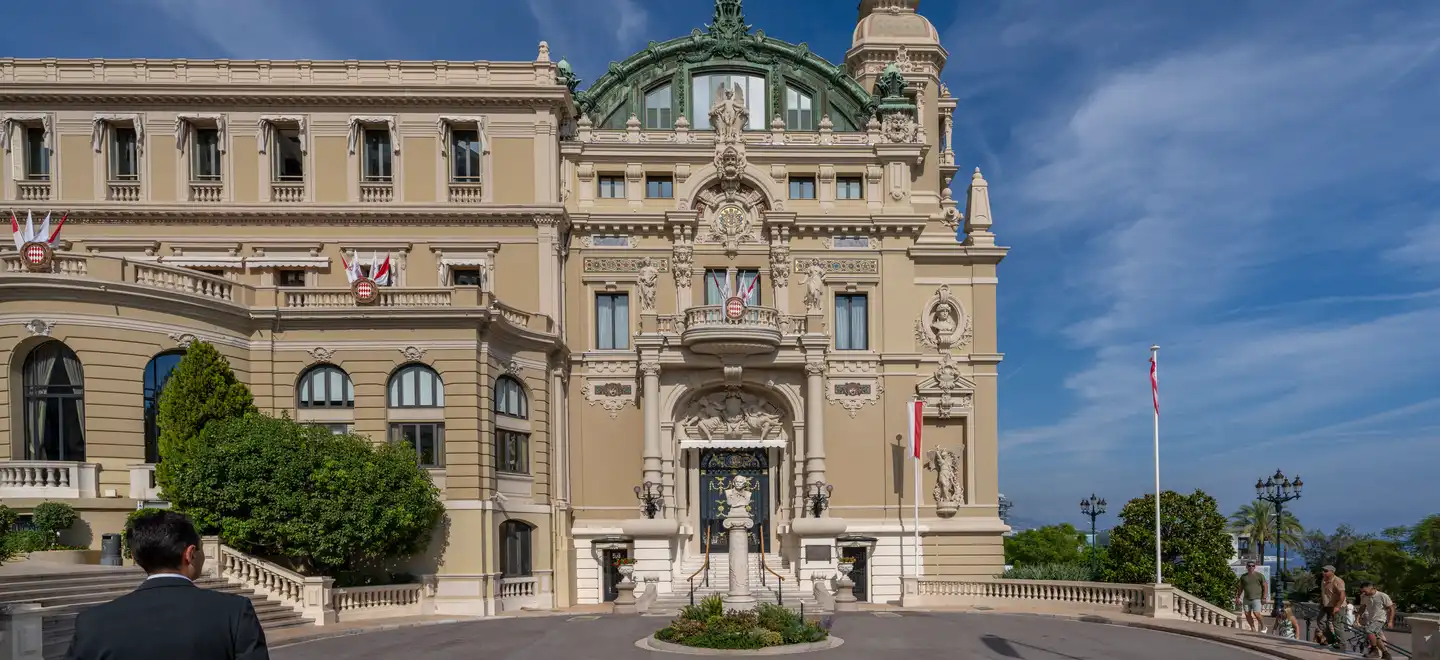
Just a few steps away, the Opéra Garnier Monte-Carlo offers a remarkable private entrance for the Prince of Monaco. Monegasque etiquette dictates that the sovereign cannot play in the casino, or even see the gaming tables. The creation of a private entrance in the Atrium now makes it easier for the Prince and his family to come to the opera.
Towards the new One Monte-Carlo district
It's time to bring our visit the full circle. On our right, the rotunda of the Hôtel de Paris Monte-Carlo, then on the left we overlook the Thermes Marins Monte-Carlo. We walk up Avenue Princesse Alice to the Hôtel Hermitage Monte-Carlo on Square Beaumarchais. Opposite the palace, on the site of the former Sporting d'Hiver, the glass buildings of One Monte-Carlo and its pedestrianised street. At the heart of this brand new district is a tree, planted by Princess Grace and around which everything here has been organised. And at the end of the street? We're back at the Place du Casino. The visit is now over. But is it?
The other side of Monte Carlo
Monte-Carlo is also a place of intense life beneath the surface of the earth. At One Monte-Carlo, the magnificent conference rooms. Under the Café de Paris Monte-Carlo: the cellars of the Hôtel de Paris house some 350,000 bottles. These are the largest hotel cellars in the world.
As table manager, our host invites us to push open the backstage door, and here we are in the underground maze of the casino, dedicated to the staff. A tangle of narrow corridors that would be hard to navigate without our guide! "These passages were used during the war," comments Sébastien Vimercati. Today, signposts help new arrivals to find their way around.
We surfaced into the sunshine which, as usual, bathes the Place du Casino. A fascinating tour of this small but world famous district.
You might also like…
Find what to buy in Monaco for Christmas
Monaco is bursting with magical gifts with which to delight someone.

Explore the Monaco Art : A guide to the Principality's treasures
Explore the world of art in Monaco: Between museums, modern art, historic masterpieces and cultural events.
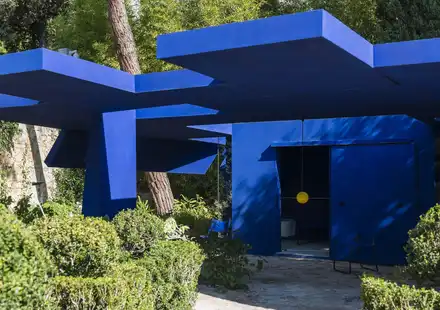
Every day is Valentine’s Day in Monaco
We have created the Valentine’s Day of your dreams... Find out more!

